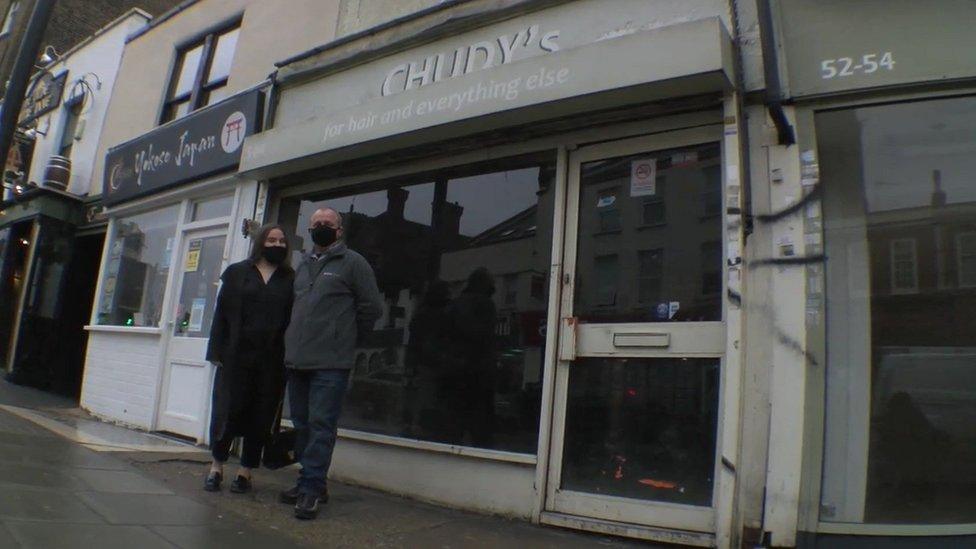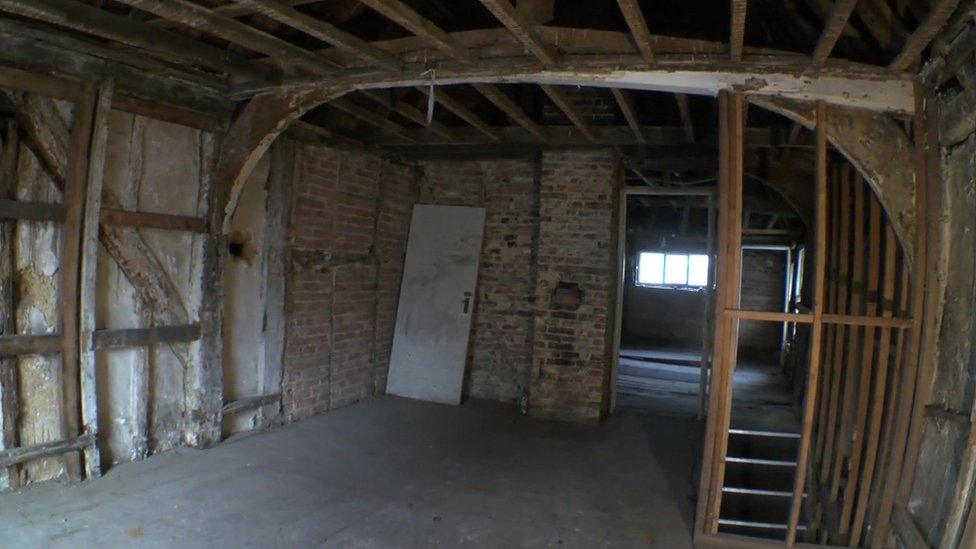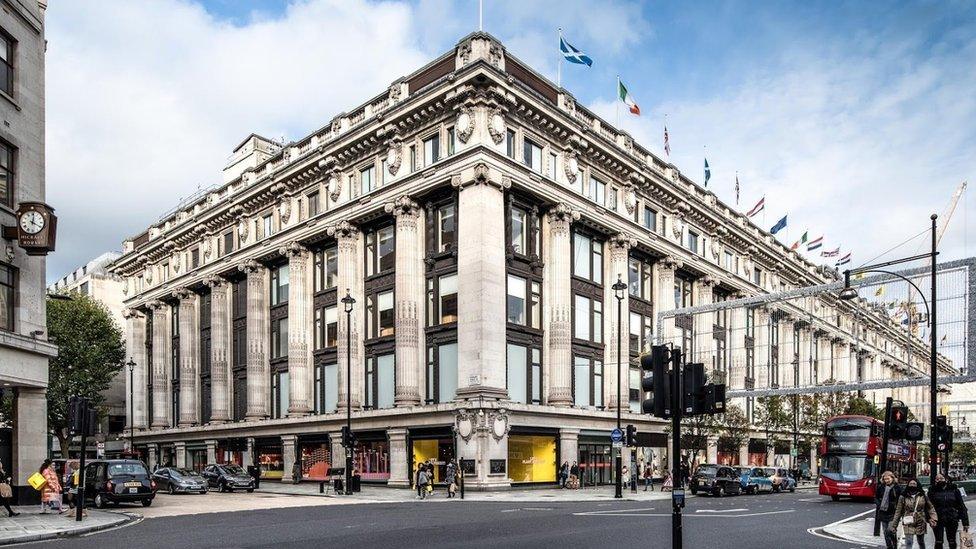Chipping Barnet shop reveals medieval surprise
- Published

Elisana and Arianit Dobra bought the shop to turn it into a florist
An empty hairdresser's salon in north London has been revealed to have an extraordinary secret - the building seemingly dates from the Middle Ages.
The premises on Chipping Barnet High Street was bought by a family who were planning to turn it into a florist.
The building's original wooden structure was uncovered during refurbishment work, and analysis of the timbers dated them to the 14th Century.
Experts described it as a "once-in-a-lifetime discovery".
Arianit Dobra, who bought the property with his daughter Elisana, said they found the interior walls were covered in plaster when they took over the building.

The oldest wooden beams inside the shop were found to date from the 14th Century
Once that was removed, the ancient wooden beams were revealed.
"You could see very clearly, this was a very, very old building," Mr Dobra said.
Historic England commissioned the Institute of Archaeology at University College London (UCL) to analyse samples of the timbers and it was found that the oldest ones were from trees that had been felled between 1330 and 1362. At that time, Chipping Barnet was a market town in Hertfordshire.
Dr Martin Bridge, from the UCL Institute of Archaeology, said he had "had no clue" about the age of the building judging by the outside of it.
"It's quite remarkable for something in north London," he added.

Sherry Bates created a drawing showing the various ages of parts of the building
Architect Sherry Bates, who has created drawings of how the original building may have looked, described the find as "a once-in-a-lifetime discovery".
"We knew it was old but it's even older than we thought," he said.
A spokesperson for Historic England said the "exciting revelation gives us a new perspective on the High Street and its hidden history".

The building was previously used as a hairdresser's salon and had been an estate agency before that
Mr Dobra and his daughter are still hoping to turn the shop into a florist but said they planned to keep some of the wooden structure on show.
"It's going to be the oldest shop in all of London," Ms Dobra joked.
England in the 14th Century
The Great European Famine led to the deaths of millions of people in Europe between 1315 and 1322
Robert the Bruce defeated Edward II at Bannockburn in 1314 to ensure Scotland survived as an independent country
Edward III became king of England in his own right in 1330 after seizing power from his mother Isabella and her lover Roger Mortimer who claimed they were ruling in his name.
The Hundred Years' War between England and France began in 1337 and ran until 1453
The plague which became known as the "Black Death" first appeared on England's south coast in the summer of 1348. It is estimated that between 30% and 45% of the general population died within two years
Related topics
- Published16 December 2020
